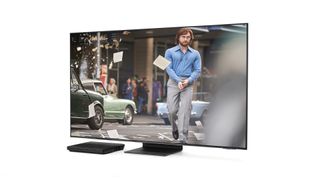It's not much use buying an amazing TV if you don't know how to get the best out of it. After all, a new set is a big investment. You want to reap the maximum possible rewards from it, and that means setting it up properly.
It puts a lot of people off, but a quick tinker can make a huge difference.
This is best done when you first install it so you don't have to worry about key factors such as positioning once you've already got your feet up. But finer adjustments to the picture can be done at any time, and can make a world of difference to your picture compared to the factory settings. You can even adjust them depending on what you're watching, or the weather conditions (you might need to up the brightness if the sun is streaming through the window, say).
Our guide will help you through the process of positioning your TV correctly to plugging in your various sources and getting your TV connected to the internet, before tackling the all-important adjustments to brightness, contrast, motion processing and more. It all adds up to the best possible TV picture. Then you can put your feet up and really enjoy.
Where should you position your TV?

Putting your TV in the right position, and not just next to the nearest plug socket, is one of the easiest things you can do to make sure your TV looks its best.
For a start, you’ll want to make sure as many seating positions as possible are viewing the TV straight on. From an angle, colours and black levels can start to look washed-out - particularly if you're watching an LCD TV. This is much less of an issue with QLED TVs as the picture doesn't lose as much of its vibrancy when viewed from an angle, but we'd still try to sit straight-on to enjoy the full picture. A pivoting TV stand can help with this, if the size or shape of your room makes it tricky.
You’ll also want to consider reflections: most windows will have curtains or blinds you can close and, of course, lights can be switched off - but a dark room can also add to eye strain during long movie sessions.
It's worth noting that many TVs can automatically adjust brightness based on the ambient light in the room. Historically, these features have been pretty poorly implemented, but the new Dolby Vision IQ format, which adjusts brightness in conjunction with the Dolby Vision metadata of the content you're watching, is much more effective and worth using if you've got a TV that supports it. Even standard Dolby Vision TVs usually have separate pre-sets for light and dark rooms.
For ambient lighting that won’t cause a distraction, consider placing lamps or lighting behind your TV. This is sometimes known as ‘bias lighting’. Many Philips TVs also have the rear-firing Ambilight LED light show technology built in which is both attractive and effective on this front.


